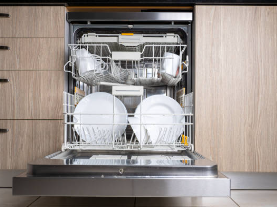Dishwashers have evolved into necessary kitchen equipment, saving over 4,000 gallons of water during lifespan. Washing intensities and water jet dispersion have an impact on performance. When purchasing best dishwasher, energy-saving choices, steam capabilities, especially features are all crucial factors to consider.
Before Upgrading Your Dishwasher
Checking the filter, water supply line, breaker box, as well as jets to quickly solve a broken dishwasher. Check on the water supply line or filter if your dishwasher fails to turn on. High-efficiency versions may suffer from soap damage, so use less detergent and rinse aid.
Non-repairable issues include a door that does not lock, loud noises, a drain that does not drain, and heating that does not heat. Before purchasing a new dishwasher, consult a repair specialist.
Best Dishwasher Purchasing Tips
- Space
Kitchens with small spaces may sacrifice room to fit a dishwasher, but issues such as distance with the sink, corner positions, and space beneath cabinets must all be considered. Consider Ultra-slim versions for smaller kitchens by measuring the opening width, depth, height, and free area for the process of loading and unloading.
- Material
A dishwasher is made from both steel and plastic parts, including steel racks or stainless-steel tubs. The stainless steel proves to be robust, corrosion resistant, as well as quieter than plastic. Plastic components, such as cutlery baskets or detergent containers, are inert and prone to splitting. The finishes on doors vary from polished and slate.
- Size
Built-in dishwashers are normally 24 inches wide, 24 inches deep, and 35 inches tall, with movable legs for further room flexibility. Some types have narrower 18-inch widths, whereas bigger models have wider 30 or 36-inch widths. Dish drawer dishwashers measure less than 19 inches tall.
- Features
A good dishwasher includes a few features like adjustable dish racks, a chopper tray, rinse or hold cycle, hard food cycle, a dirt sensor, filter type, designated wash zones, washing cycle options, hot dry, concealed control panel, and child safety lock may help keep dishes clean and easy. These features can help you conserve water and energy, as well as minimize noise and sanitize your home.
- Noise
Manufacturers frequently quote average decibel levels for their machines, however this can be misleading because it covers all cycles, particularly drying. The majority of devices are in the 50-dB range, ranging from the loudest versions hitting 60 dB and the lowest around 38 decibels. Choose stainless steel interiors for quieter versions.

